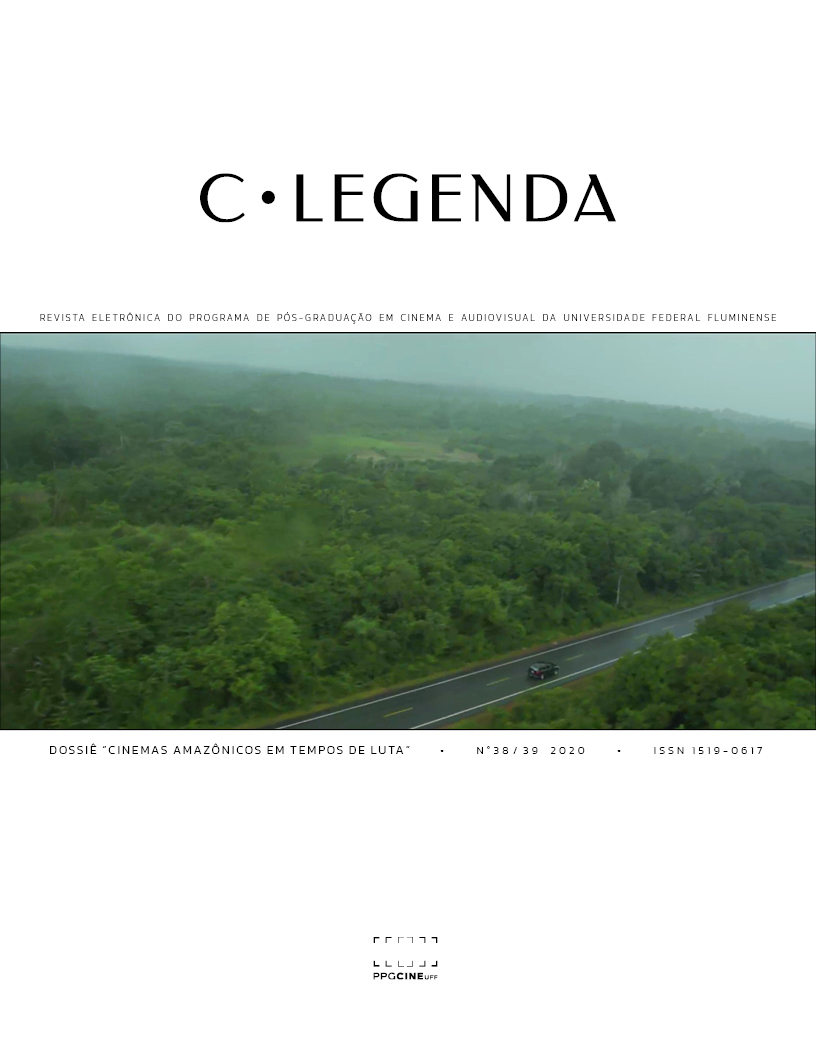Noir aesthetics in the first season of True Detective
Keywords:
Neo noir. Noir. Série televisiva. True DetectiveAbstract
The paper analyses the first season of True Detective (HBO, 2014-), in the
light of the thematic and formal features of a film noir aesthetics. The study uses textual analysis procedures to expose the creative choices involved in the realization of the series. For our reasoning, we first seek a brief review of the aspects of noir aesthetics updated by the series. Then, an analysis of the narrative aspects demonstrates how the series undertakes new figurations for characteristic tropes of film noir. Finally, an analysis of the visual aspects indicates how a series set in rural environments and with many daytime dramatic actions reconstructs the essence of the noir iconography. The conclusion of the reflection points out how the noir aesthetic emerges from the creative choices as a manifestation of diegetic elements.
Downloads
References
ABRAMS, Jerold J. A homespun murder story: film noir and the problem of modernity in Fargo. In: CONARD, Mark. T (Ed.). The philosophy of the Coen brothers. Kentucky: University press of Kentucky, 2012. 344 p.
BORDWELL, David. O cinema clássico hollywoodiano: normas e princípios narrativos in RAMOS, Fernão Pessoa (Org). Teoria Contemporânea do Cinema Vol II: Documentário e narratividade ficcional. São Paulo, Ed. SENAC, 2005. 325 p.
BULHÕES, Marcelo. Considerações sobre a adaptação para o audiovisual: a ficção noir. 2011. Disponível em: https://online.unisc.br/seer/index.php/signo/article/view/2512/1765. Acesso em: 28 abr. 2020.
CONARD, Mark. The philosophy of neo-noir. Lexington: The University Press of Kentucky, 2007. 222 p.
GUIMARÃES, Denise. Trans/re/criações do estilo noir: das páginas para as telas. Revista Iluminuras, Porto Alegre, v. 15, n. 35, p. 294-317, jan./jul. 2014. Disponível em: http://www.seer.ufrgs.br/index.php/iluminuras/article/view/49339/30921. Acesso em: 28 abr. 2020.
HAAS, Guilherme. True Detective é a série estreante de maior audiência na HBO desde 2001. 2014. Disponível em: https://www.minhaserie.com.br/novidades/15785-true-detective-e-a-serie-estreante-de-maior-audiencia-na-hbo-desde-2001. Acesso em: 10 mar 2020.
HELLER, Eva. A psicologia das cores: como as cores afetam a emoção e a razão. São Paulo: G.Gili, 2012, 311 p.
MASCARELLO, Fernando. História do cinema mundial. Campinas: Papirus, 2006. 433 p.
MITTELL, Jason. Complexidade Narrativa na Televisão Americana Contemporânea. in Matrizes. Ano 5 – nº 2 jan./jun. 2012.
NOGUEIRA, Luís. Manuais de Cinema II: gêneros cinematográficos. Covilhã: LabCom, 2010. 157 p. Disponível em: http://www.labcom-ifp.ubi.pt/ficheiros/nogueira-manual_II_generos_cinematograficos.pdf. Acesso em: 15 abr. 2020.
PATCHES, Mat. How True Detective’s cinematographer got these 9 shots. 2014. Disponível em:http://www.vulture.com/2014/03/true-detective-cinematographer-9-shots-adam-arkapaw.html#. Acesso em: 22 abr. 2020.
PORFÍRIO, Robert. “The Strange Case of Film Noir” in SPICER, Andrew and HANSON, Helen. A Companion to Film Noir. West Sussex, Blackwell Publishing, England.2013.p.17-32.
SANDERS, Steven. “Television Noir” in SPICER, Andrew and HANSON, Helen. A Companion to Film Noir. West Sussex, Blackwell Publishing, England.2013.p.440-457.
SPICER, Andrew and HANSON, Helen. A Companion to Film Noir. West Sussex, Blackwell Publishing, England. 2013.p.522.
Downloads
Published
Issue
Section
License
Autores que publicam nesta revista concordam com os seguintes termos:- Autores mantém os direitos autorais e concedem à revista o direito de primeira publicação, com o trabalho simultaneamente licenciado sob a Creative Commons Atribuição-NãoComercial, CC BY-NC permitindo o compartilhamento do trabalho com reconhecimento da autoria do trabalho e publicação inicial nesta revista, sem que o material seja usado para fins comercias.
- Autores têm autorização para assumir contratos adicionais separadamente, para distribuição não-exclusiva da versão do trabalho publicada nesta revista (ex.: publicar em repositório institucional ou como capítulo de livro), com reconhecimento de autoria e publicação inicial nesta revista.
- Autores têm permissão e são estimulados a publicar e distribuir seu trabalho online (ex.: em repositórios institucionais ou na sua página pessoal) a qualquer ponto antes ou durante o processo editorial, já que isso pode gerar alterações produtivas, bem como aumentar o impacto e a citação do trabalho publicado (Veja O Efeito do Acesso Livre).


